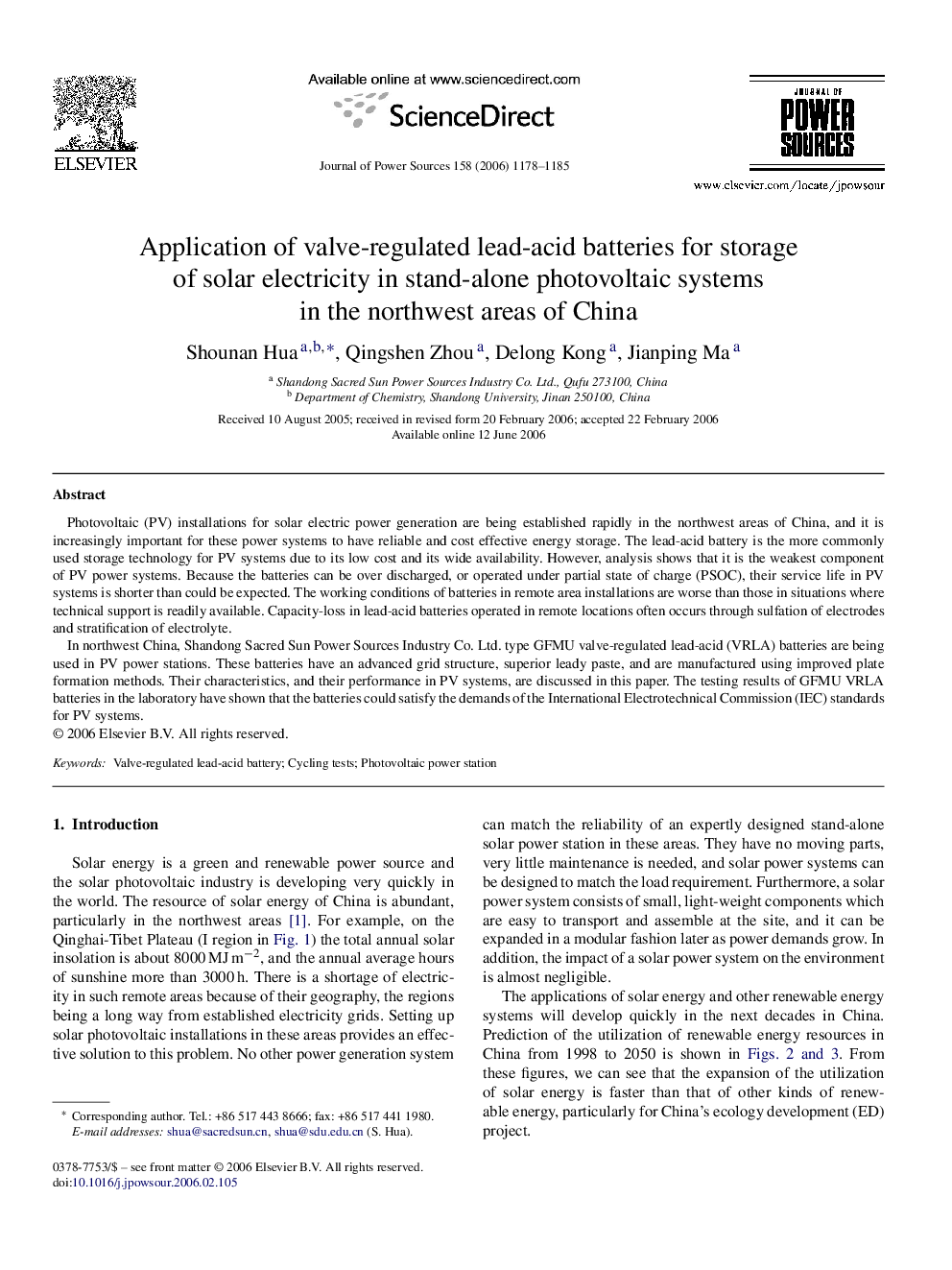| Article ID | Journal | Published Year | Pages | File Type |
|---|---|---|---|---|
| 1287388 | Journal of Power Sources | 2006 | 8 Pages |
Photovoltaic (PV) installations for solar electric power generation are being established rapidly in the northwest areas of China, and it is increasingly important for these power systems to have reliable and cost effective energy storage. The lead-acid battery is the more commonly used storage technology for PV systems due to its low cost and its wide availability. However, analysis shows that it is the weakest component of PV power systems. Because the batteries can be over discharged, or operated under partial state of charge (PSOC), their service life in PV systems is shorter than could be expected. The working conditions of batteries in remote area installations are worse than those in situations where technical support is readily available. Capacity-loss in lead-acid batteries operated in remote locations often occurs through sulfation of electrodes and stratification of electrolyte.In northwest China, Shandong Sacred Sun Power Sources Industry Co. Ltd. type GFMU valve-regulated lead-acid (VRLA) batteries are being used in PV power stations. These batteries have an advanced grid structure, superior leady paste, and are manufactured using improved plate formation methods. Their characteristics, and their performance in PV systems, are discussed in this paper. The testing results of GFMU VRLA batteries in the laboratory have shown that the batteries could satisfy the demands of the International Electrotechnical Commission (IEC) standards for PV systems.
